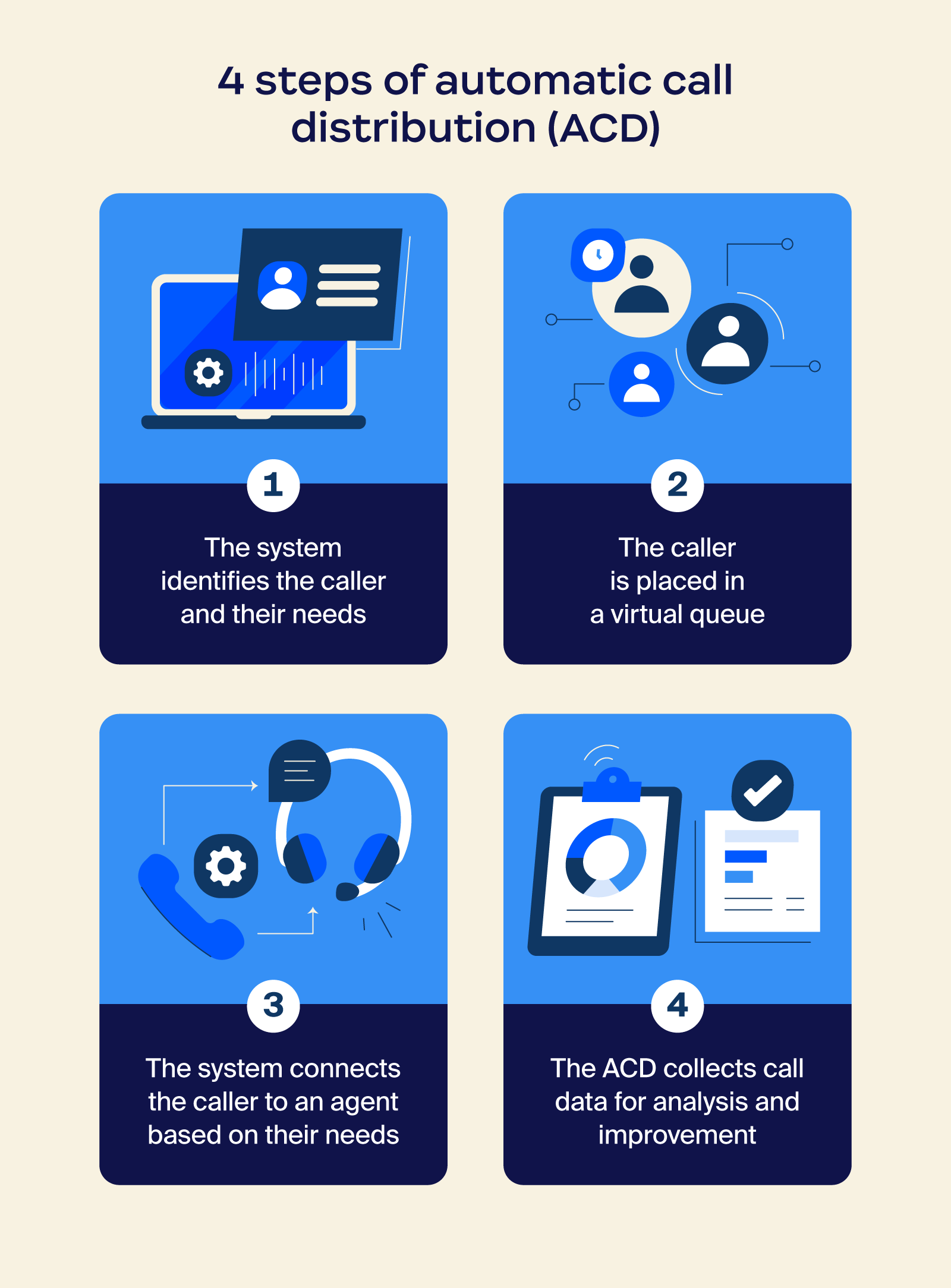
Meet Zoom AI Companion, your new AI assistant!
Boost productivity and team collaboration with Zoom AI Companion, available at no additional cost with eligible paid Zoom plans.
Updated on December 17, 2025
Published on September 05, 2024


Ever wondered how those massive call centers manage to connect you with the right person so quickly? The secret is automatic call distribution, or ACD. This technology manages customer calls (and now chats, emails, SMS, and social media messages) to a contact center, routing them to the most suitable agents in a flash. Think of it as a high-tech receptionist that never sleeps.
ACDs can be the difference between a smooth workflow and incoming call chaos. We'll explore how ACDs can be used to boost efficiency, improve customer service, and help your business stay ahead of the competition.
Automatic call distribution is a technology that intelligently manages incoming interactions to a contact center. Instead of manually routing calls, ACD phone systems automatically direct calls to the most suitable agent to improve efficiency and customer satisfaction.
At its core, ACD optimizes agent utilization and minimizes customer wait times. The system analyzes various factors to determine the best fit for each incoming call, like:
This helps distribute incoming calls evenly. ACD phone systems can also prioritize calls based on urgency or customer importance so critical issues are addressed promptly.
But routing calls is just the tip of the iceberg. Behind the scenes, ACD software like Zoom Contact Center can employ sophisticated algorithms to monitor agent status, track call duration, and analyze historical data. By leveraging these insights, ACD systems can predict call volumes, optimize agent scheduling, and provide valuable performance metrics.

The ACD process typically involves the following steps:
ACDs use different strategies to route incoming calls to agents. The best method depends on your business needs and call volume. Here are some common approaches:
By automating these processes, ACD software significantly enhances traditional and cloud contact center efficiency, reduces wait times, and improves customer satisfaction.

Automatic call distribution and interactive voice response (IVR) are often used together to optimize call center operations, but they serve distinct purposes.
An ACD system is primarily responsible for efficiently routing incoming calls to available agents. It acts as a traffic controller, directing calls to the most appropriate agent based on factors like skill set, availability, and call priority. ACD systems create a streamlined workflow by distributing calls evenly among agents.
In contrast, an IVR system is an automated menu system that interacts with callers to gather information and direct them to the right service or agent. This is likely familiar to you as the automated voice you hear when calling a business, prompting you to “Press 1 for accounting, Press 2 for scheduling,” and so on.
IVR systems provide callers with self-service options and guide them through multiple prompts. They can even reduce call volume by addressing common inquiries without involving an agent.
Essentially, ACD focuses on call distribution, while IVR handles initial caller interaction and qualification. By combining ACD and IVR, call centers can effectively manage call volume, improve caller satisfaction, and optimize agent productivity.
An automatic call distributor offers numerous benefits to both customers and agents alike, including:
To make the most of your contact center, your ACD system needs to pack a punch. Besides just sending calls to agents, it should have some extra tools to help you and your team shine.
Here are some key features to look for:
Automatic call distribution is a game changer for call center operations. By intelligently routing calls, reducing wait times, and balancing workloads, you’ll empower agents to deliver exceptional customer service while enhancing customer satisfaction.
Zoom Contact Center with AI Companion offers a robust ACD solution combined with a suite of powerful features to elevate your customer interactions. Learn what Zoom can do for all your contact center business needs today.